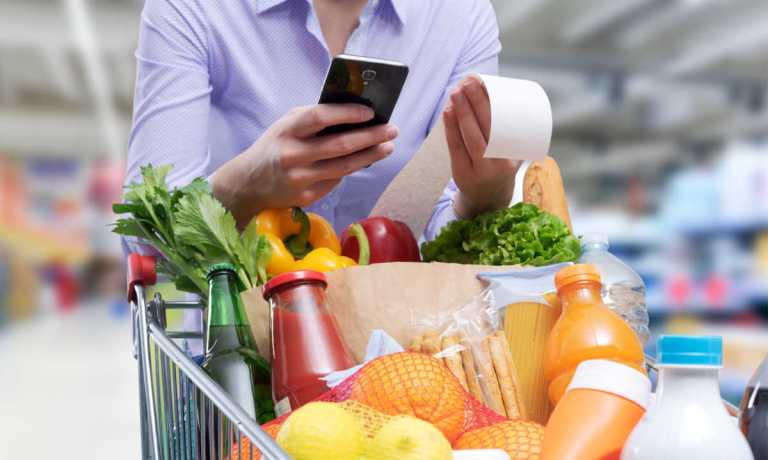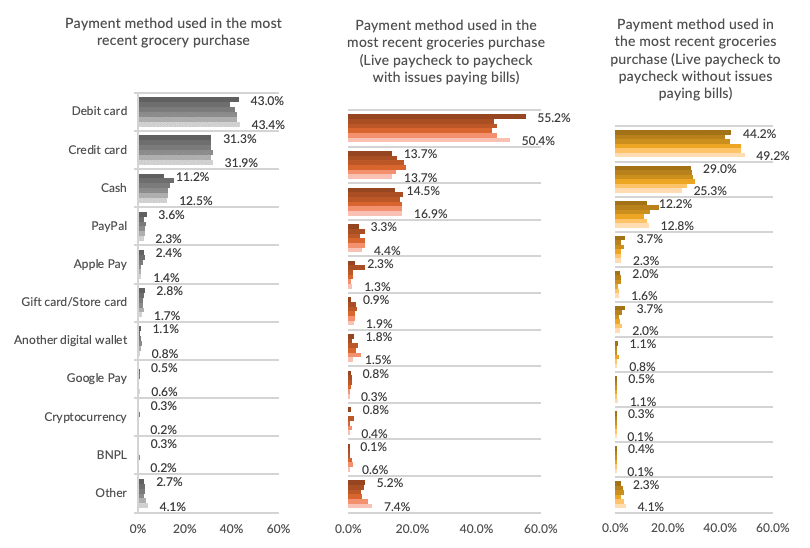
Some consumers may try buying groceries with buy now, pay later (BNPL), but PYMNTS research shows it doesn’t stick.
BNPL is increasingly becoming an option for food purchases. Major grocers are getting onboard, with Kroger offering Afterpay, Walmart accepting payments via Affirm, and leading third-party delivery aggregator Instacart providing the option to pay with Klarna. Yet, it seems consumers are not satisfied with their BNPL grocery experiences, and those who do try it abandon the payment method fairly quickly.
A PYMNTS study of more than 2,400 U.S. consumers who have purchased groceries at least once in the past month revealed that very few shoppers — even those who are struggling to pay their bills each month — are willing to pay for their groceries in installments.

The study found that, in March, only 0.3% of those surveyed had paid for their most recent grocery purchase with BNPL options, down 50% year over year from the 0.6% who said the same in March 2022.
Notably, as of last month, the consumers most likely to use the payment method are those who live paycheck to paycheck but who do not struggle to pay their bills, whereas those who live paycheck to paycheck with difficulty are actually the least likely to use the option now (which was not always the case), suggesting that they were unhappy with their experiences in the past.
This past March, 0.4% of paycheck-to-paycheck grocery shoppers who do not have issues paying bills paid for their most recent grocery purchase with BNPL, down just slightly from the 0.6% that had done so a year earlier.
Yet a shockingly low 0.1% of those who do have issues paying their bills each month reported having paid for their most recent grocery purchase with BNPL, down by a factor of 14 from the 1.4% who had done so a year earlier.
Instead, a far greater share of consumers who do not wish to pay the full total at the point of sale are paying for their grocery purchases with their credit cards. Thirty-one percent of those surveyed had used a credit card on their most recent grocery purchase.
These low numbers of BNPL adoption suggest that consumers have been disappointed, given that, just a year and a half ago, many grocery shoppers were interested in trying out the payment method. Research from PYMNTS’ end-of-2021 report, “The New Credit Model: Why Financially Worry-Free Consumers Still Want Alternatives to Traditional Credit,” created in collaboration with Sezzle, which drew from a survey of more than 7,000 U.S. adults, found that 21% of consumers were interested in using BNPL to pay for groceries.
Indeed, BNPL providers, for their part, are interested in driving adoption for more kinds of purchases, including grocery.
“Anything that gets back to aligning expenditure with cash flow I think is good for consumers,” PayPal Vice President of Global Pay Later Products Greg Lisiewski said in a PYMNTS TV interview. “And you’ll start to see these solutions penetrate other non-retail verticals…”